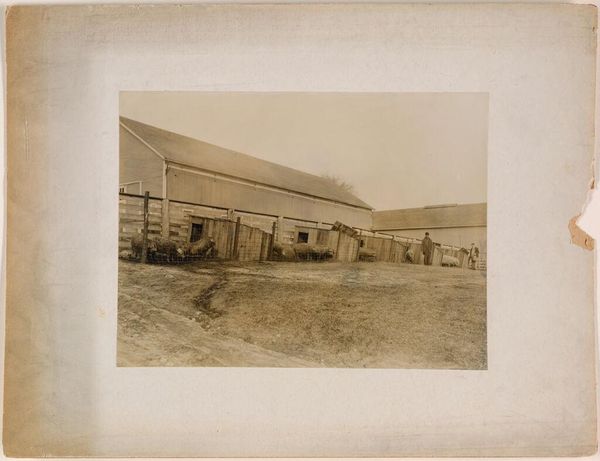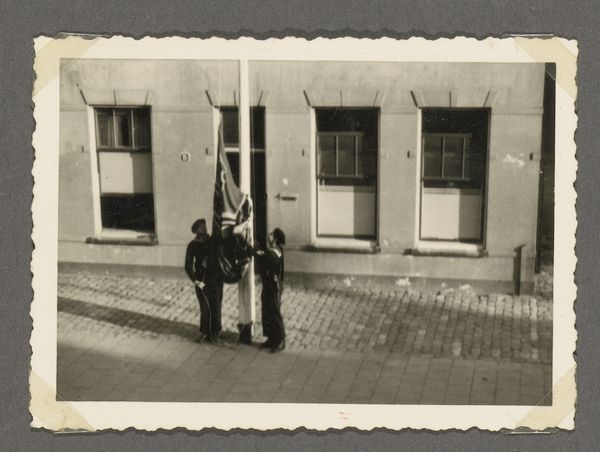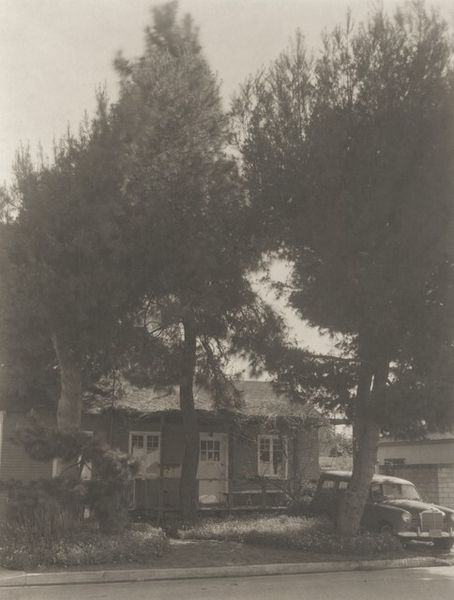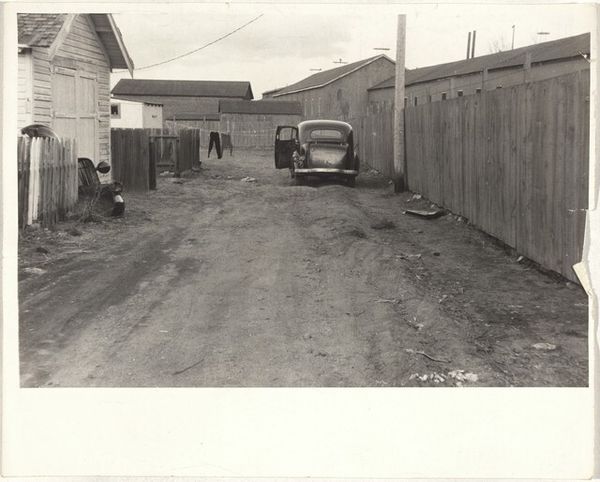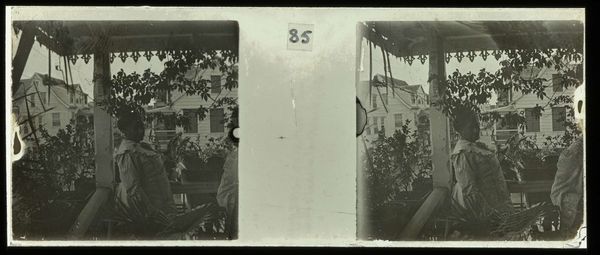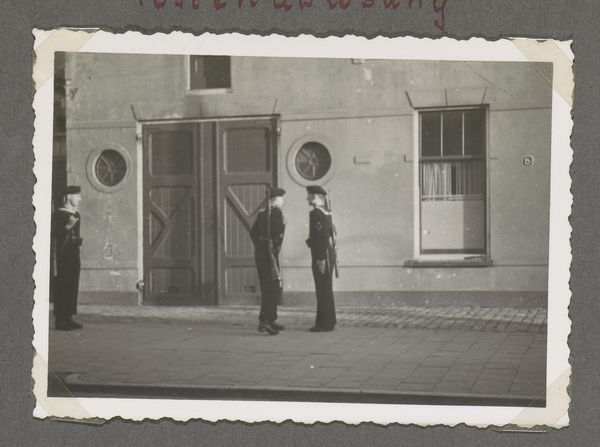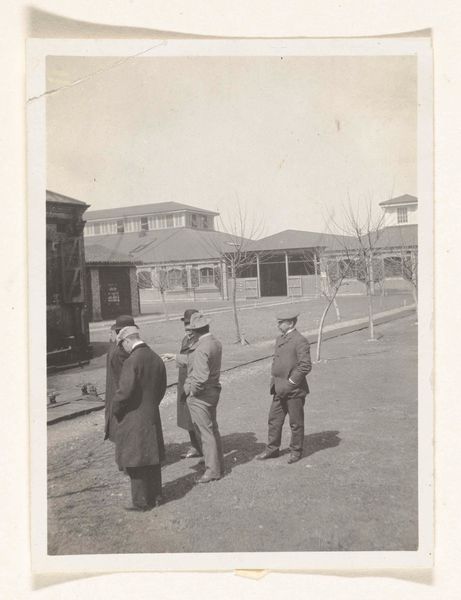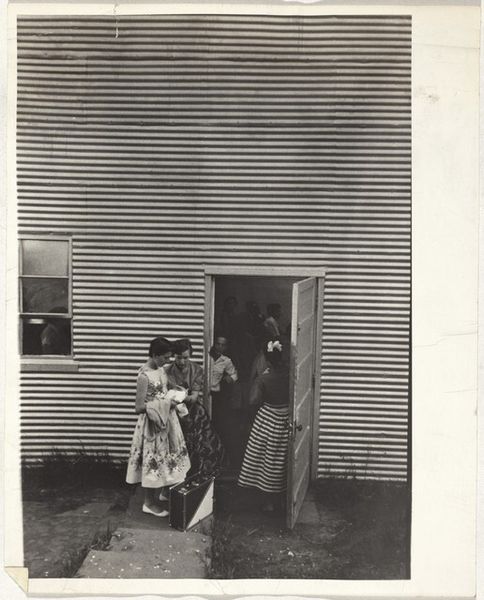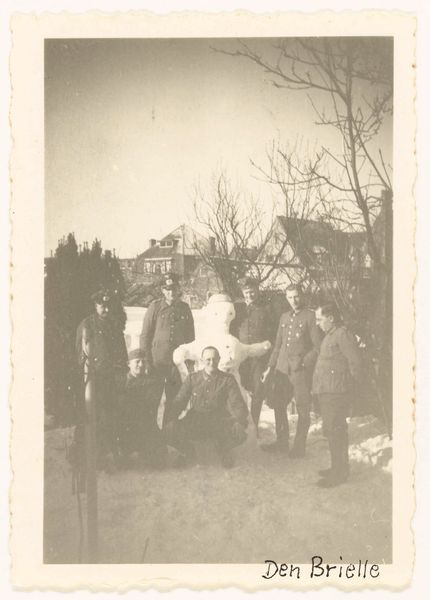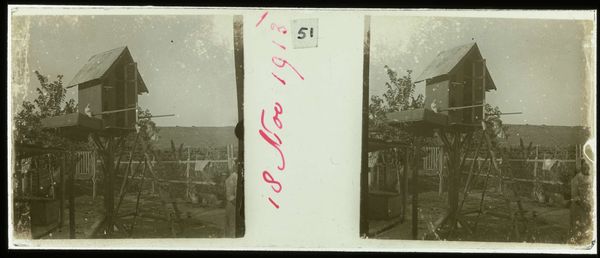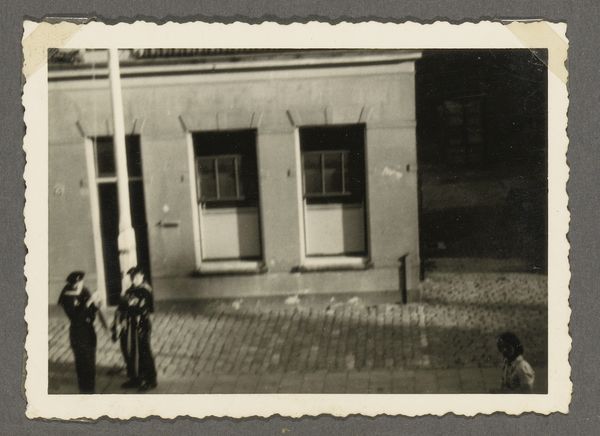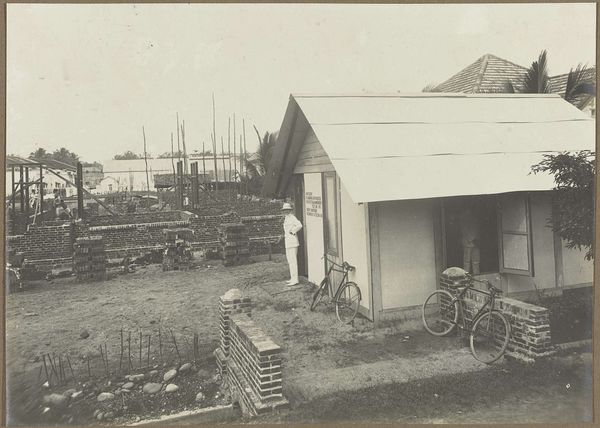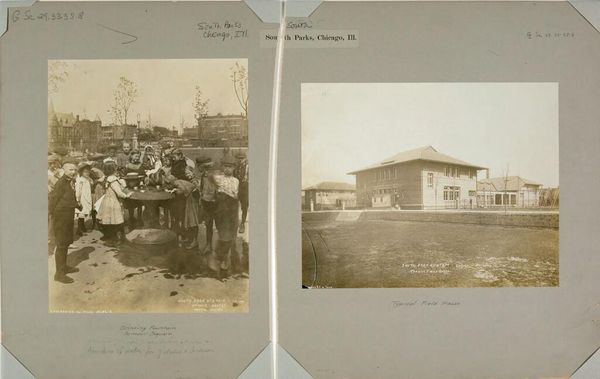
Dimensions: sheet: 20.2 x 25.2 cm (7 15/16 x 9 15/16 in.)
Copyright: National Gallery of Art: CC0 1.0
Curator: This is Robert Frank's "Street, Paris," a photograph taken in 1951. Editor: It's incredibly atmospheric, almost grim. The slick street, the stark figures… it feels heavy, burdened. Curator: Frank, though Swiss-American, really captured the post-war mood in Europe with pieces like this. There’s a social realism, stripped of romanticism. This was during a time of reconstruction, a time of reassessing values in European identity. The camera becomes a tool to question dominant ideologies and social structures by unveiling everyday existences of people on the margins. Editor: Right. Look at the surface texture. The almost brutal graininess of the print enhances that feeling. This isn't about prettifying Paris, or showing any glamour—the raw physicality of the rain and the people just going about their day is highlighted. I think the choice of materials plays into his themes. It's immediate, not polished. Curator: And the figures themselves! Consider the woman on the left, contrasted against the couple entering what looks to be an upscale establishment with Bordeaux signs above the shop’s windows and entrance. Is Frank highlighting divisions, or just observing the different paths life carves? How about consumer culture seeping in? The photograph has allusions to this too. Editor: It also calls attention to class, race and social hierarchies. I am thinking especially about the fact that Frank printed the photograph himself. You see the artist engaging with this social commentary as much through material means and their labour, as through the explicit visual narratives or metaphors. Curator: It’s true. He wasn't just pointing a camera; he was actively constructing a commentary on the sociopolitical situation with his compositional choices. Even the tilted horizon lends itself to a feeling of precariousness. It forces you to notice the structures that are present, while highlighting the temporary. Editor: This photograph's bleakness serves not only as a portrait of Paris at that specific moment in time, but as an exploration of the means used in artistic labour to document, and challenge social environments. It becomes an incredibly charged statement, when you look at all the variables involved. Curator: Ultimately, "Street, Paris" transcends mere documentation, doesn’t it? It’s a potent commentary. Editor: Exactly. It makes me think about photography as a material process, and the labour needed to reflect the times.
Comments
No comments
Be the first to comment and join the conversation on the ultimate creative platform.
